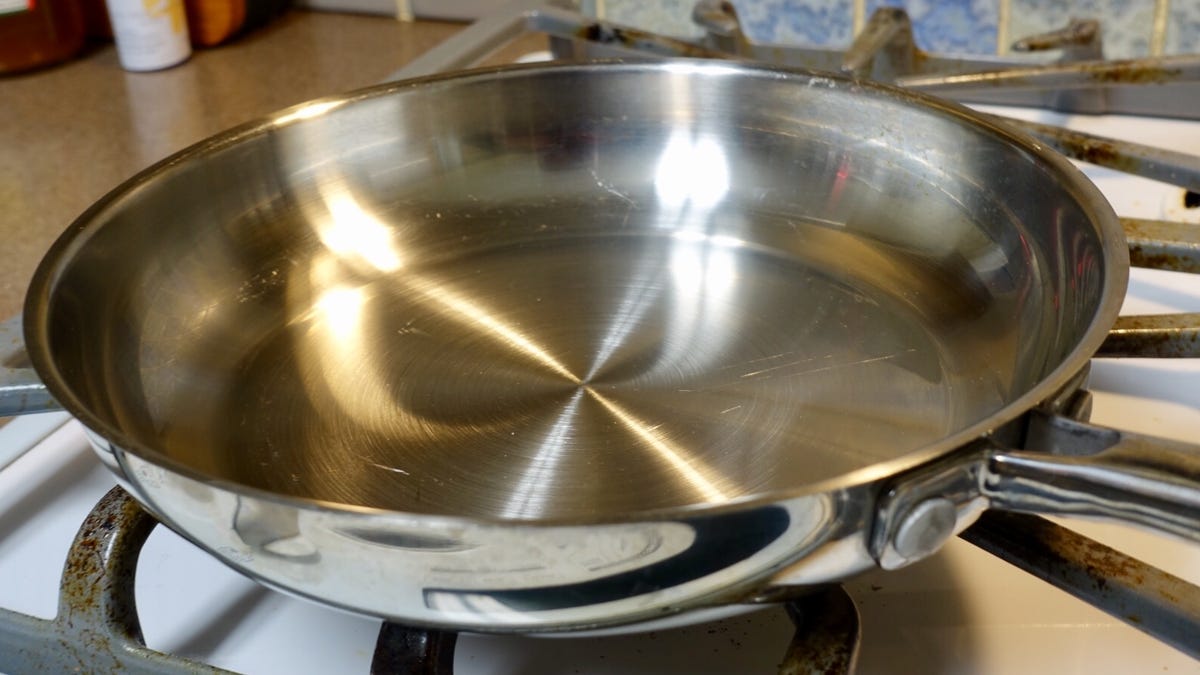Why I threw away my pots and pans -- and you should, too
You could be wasting energy and contaminating your food.

Your old pots and pans may get the job done, but they may not be cooking as well as they should. Some pans can even contaminate your food when they get too old.
Here are some reasons to consider a trip to the kitchen supply store for a new set.
The warped and the wasted
So, your old pots and pans have seen better days. Who cares if they have dents and dings, right? Well if the dent is on the bottom, you may have a problem, no matter if it's nonstick, stainless steel or carbon steel.
Pans with dents on the bottom will cook your food unevenly. This is because the part that is in contact with the heating element will become hotter that the concave area of the dent.
The bottom of your pot or pan should lay flat to have good contact with the heating element.
The American Council for an Energy-Efficient Economy found that boiling water in a warped-bottom pan can use 50 percent more energy than a flat-bottom pan.
Nonstick can put you in a sticky situation
When the coating comes off, pans aren't nonstick anymore. No one likes to clean stuck-on food from scorched pans, so you're going to need a replacement.
Cast-iron pans are a good alternative. Seasoned pans are nonstick and you don't have to worry about them peeling or flaking. If they do become sticky, you can be make them nonstick again, easily.
Did you know some nonstick pans can also become dangerous when they start to deteriorate? It's true.
The coating on your nonstick pans is called polytetrafluoroethylene, better known as Teflon. Some versions, though, also contain perfluorooctanoic acid or PFOA. This is a suspected carcinogenic substance that was phased out years ago by most manufacturers, but not all, according to Scientific American.
To err on the side of caution, toss any nonstick pan as soon as it starts flaking to prevent the possible consumption of PFOA. Besides, you don't want to end up eating flakes in your scrambled eggs.
Cracked enamel pots and pans
The same wisdom for nonstick also goes for enamel-coated pans and pots (like Dutch ovens). If you see any chips in the pan, there's a risk that more of the coating will flake off into your food.
The jury is still out on whether enamel coating could be toxic to consume, but let's stay on the safe side. And again, do you really want bits of enamel in your food? Me either.
Get an upgrade
Even if you think your pans are fine, there are probably ones out there that just work better. For example, pans with copper heat up more quickly than stainless steel, in turn cooking your food more quickly.
Especially if your pans were inexpensive to start with, they aren't designed to last forever. Consider that scratch in your nonstick skillet or ding in your sauce pan a reason to invest in pans that cost a bit more up front, but will survive abuse in the kitchen for years.
Editors' note: This article was published on May 4, 2017, and has been updated.
Once you have your pan situation sorted out, use this cooking tip to save energy.
Which cutting board earns a place in your kitchen? Here's what you need to consider.

